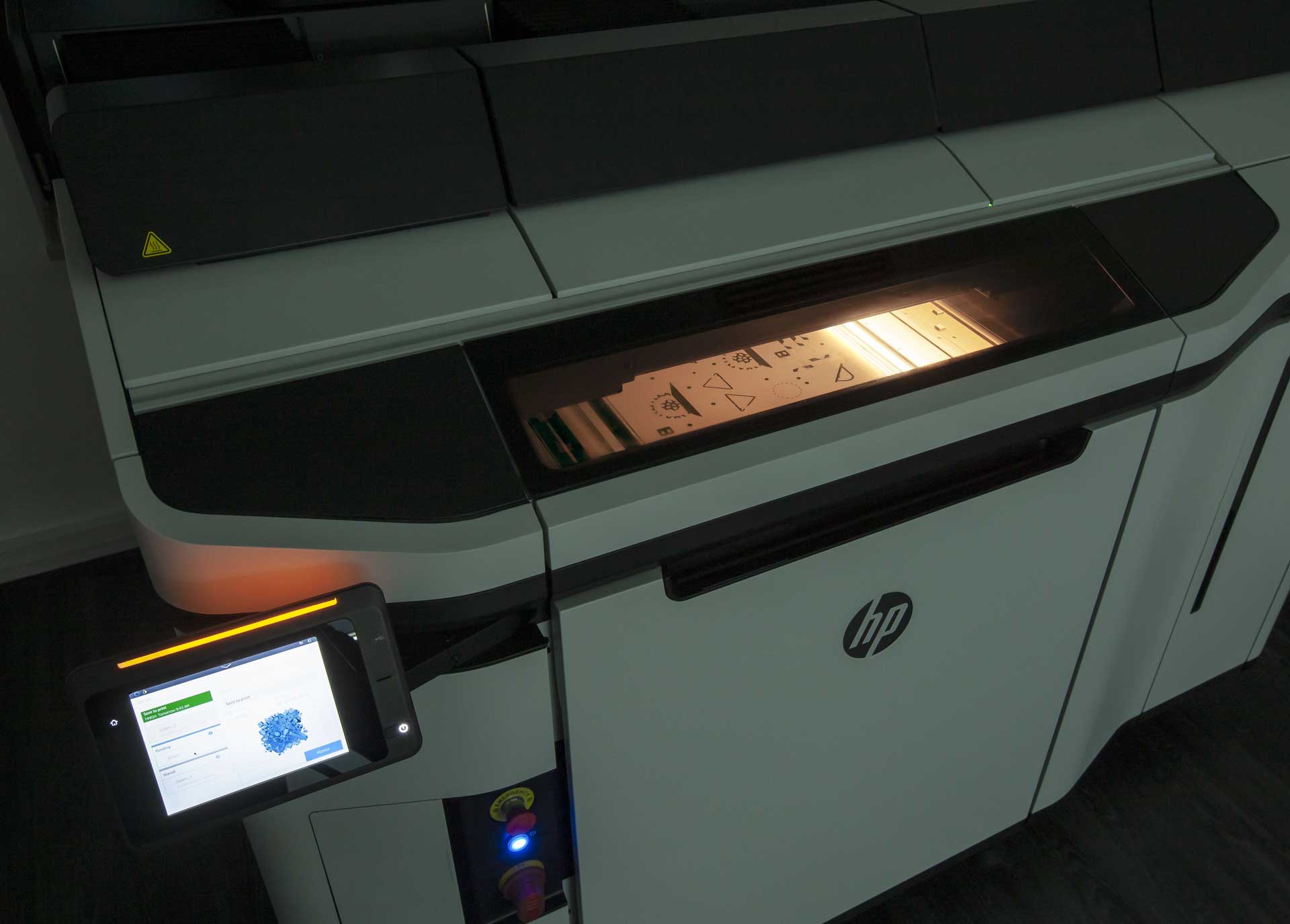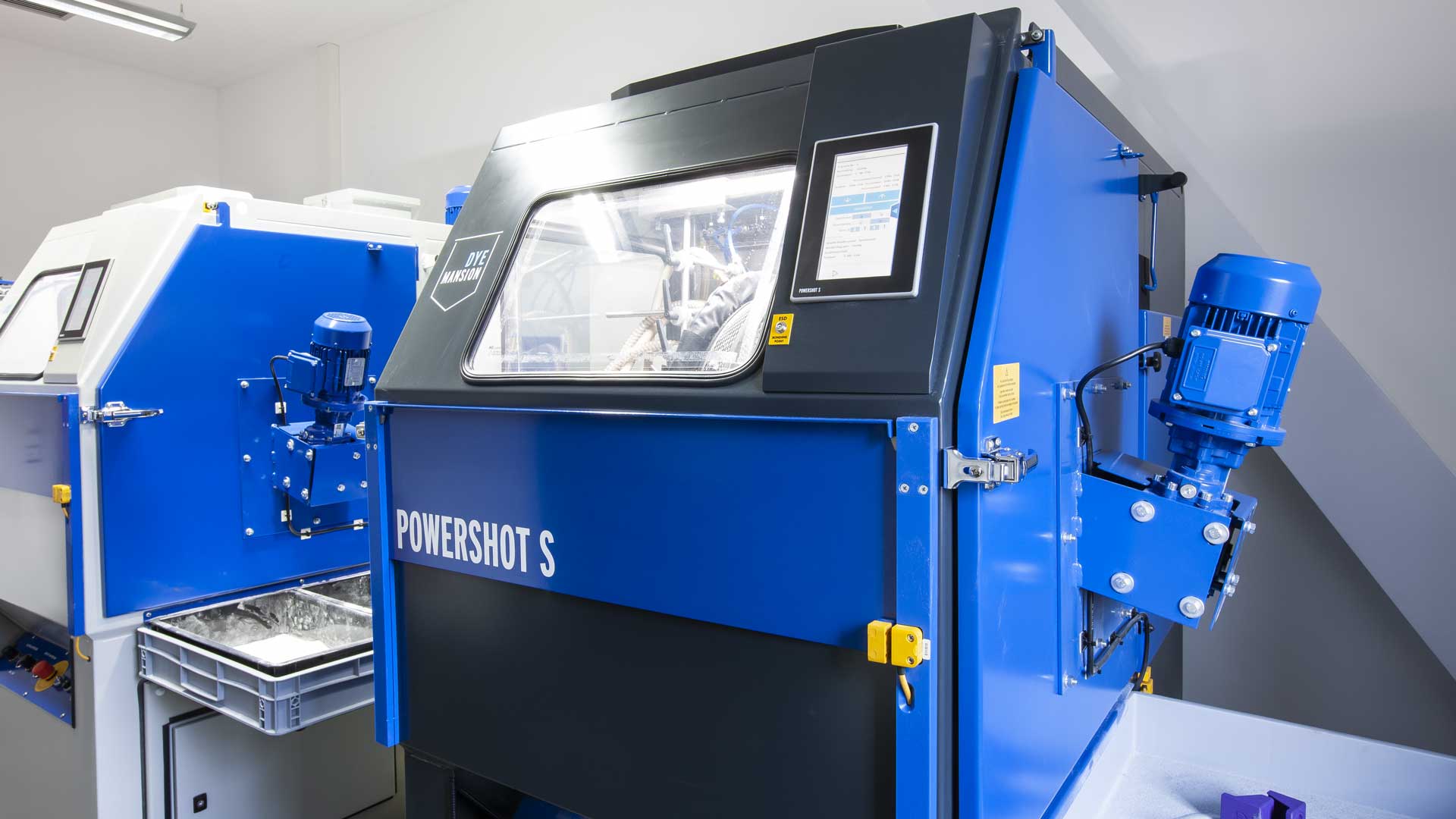Creativity and meticulousness always go together
The W-3D manufacturing process
Let us demonstrate our high-quality components and consistently reproducible quality to you. The production steps in detail.
Data transmission or design?
We are happy to adapt our process to the special requirements and wishes of our customers. This means we either produce strictly according to the data supplied or we can take on component optimisations on request. Of course, we can also generate the data for the design for specific projects in-house.
3D printing in the powder bed (MJF)
The print head sprays a heat-conducting liquid (fusing agent) onto a layer of the material powder. Immediately after printing, a heat source (infrared light) comes into play. The areas to which the fusing agent was applied are heated more than the powder without this liquid. In this way, the sections for the component to be printed are fused together.
The detailing agent is used to isolate defined areas by applying it around the areas to which the fusing agent has been applied. This process allows sharply defined contours to be created. The benefits for you are that this method eliminates the need for a supporting structure, which saves considerable time and money!
3D printing in the FDM process
The FDM process (fused deposition modelling) is based on the fusion and subsequent layer-by-layer application of plastic. To this end, the plastic to be processed is fed to an extruder in filament or rod form, then melted and applied to a print bed through the hot end and nozzle according to the structure specified in the CAD files.
Breaking out parts / rough cleaning (MJF)
This phase of breaking out the components and rough-cleaning them is an important preparatory task for de-powdering.
De-Powdering (MJF)
For downstream processes, the component must be free of any powder. The surface of the component is finished by means of carefully applied glass bead blasting.
Polyshot / Mass Finishing
Polyshot surfacing (PSS) is ideal for hard plastics such as PA12 or PA11 and irrespective of the geometry of the parts. In this process, plastic beads are used to finish the surface of the component by compacting and refining the surface structure. This creates a very fine and, above all, smooth outer skin.
During the mass finishing process, different abrasives are combined depending on the requirements.
vapour smoothing
The surface quality of 3D-manufactured plastic parts can be optimised by the process of vapour smoothing. In this way, thermoplastics can be compacted and their surfaces smoothed. The components are also characterised by increased breakage loads and impact strength. The sealed and smoother surfaces are also waterproof, airtight and easier to clean.
Dyeing
Thanks to smart automation of the process steps and constant ambient conditions, W-3D is always able to achieve reproducible colour quality and special colour depths.








